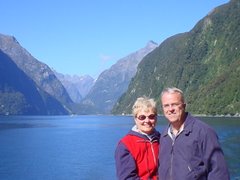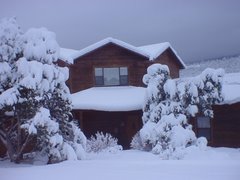Saturday we took a day trip out to the Dry Tortugas National Park - about 70 miles and two hours west of Key West - traveling aboard the Fast Cat catamaran. (Key West is not the westernmost key in the US.) Friend, Dick Reinert, has been to KW at least a couple of times and highly recommended this trip. Ponce de Leon, in the early 1500s was the first European discoverer of this group of small islands and he named it for the turtles in the areas. Dry was added later to denote that there was no source of fresh water.


The sea wall and moat surrounding the fort were for protection from hurricanes as well as attackers.



Susie sunned on this beach while I climbed around the fort. We both tried snorkeling a bit, but there wasn't much of snorkel appeal in this area, at least when we were there. There is a coral reef 100 yards out, but we weren't too keen on flippering out there. We were keen on relaxing and reading on the beach.

The centerpiece of the park (unless you're a birdwatcher) is Fort Jefferson - a massive fort built to protect shipping in and out of the Caribbean (more info at this Wikipedia website). The National Park (so designated in 1992) began its federally protected status as a wildlife preserve - fish, birds, and coral reefs, so wildlife management is part of the Park's mission. I thought it was interesting that our guide for a tour of the fort was a tour employee, not a Park Ranger.
The park covers about 100 square miles - seven tiny keys and surrounding water. Here are a couple of internet pictures of the fort:


The sea wall and moat surrounding the fort were for protection from hurricanes as well as attackers.
The fort is huge: three tiers, designed for 450 guns and 1500 men. The six sides range from roughly 300 to 500 ft. in length and it covers 11 acres. (Quick. Somebody work that out in units of football fields.*) There are sixteen million bricks in it - the largest brick structure in the western hemisphere. Construction started in 1846 and continued for 30 years, but the fort was never finished. There was never a shot fired in anger, nor was that too likely, in my humble opinion. Marauding pirates and the young country’s enemies could easily stay out of range. However, the fort’s main function was to provide a safe anchorage for US patrol ships that operated in the Gulf providing protection for US shipping. Additionally, if an enemy held this location, that would pose a serious threat to the US – so keeping it in US hands was essential, at least for a while.
Maintenance costs and climate made it hard to justify its continued use as a fort. I suppose changing world conditions made it less strategically important. In 1888 the Army turned the fort over to the Marines for use as a quarantine hospital. In retrospect, you have to wonder if it was all worth it. At the least, could its mission have been accomplished with a less grandiose fort? Who knows? It's mind-boggling to find this huge fort on a tiny, remote island. Thanks, Dick, for making us aware of this piece of history.
During and after the Civil War the fort served as a prison and its most famous inmate was Dr. Samuel Mudd, who treated John Wilkes Booth after he assassinated Abraham Lincoln. For this, Mudd was convicted of conspiracy. He was subsequently pardoned by President Andrew Johnson, in part for his work at Fort J combating an outbreak of yellow fever. Here's Mudd's dungeon room.

Here are a couple of my fort pictures:


The fort was built with numerous cisterns beneath it and a drainage system for capturing rain water and channeling it into the cisterns. Unfortunately, part of the fort subsided and damaged many of the cisterns so that they were unable to collect more than a small part of the water needed for soldiers and prisoners.
Sidebar. The first engineer sent out to evaluate the site's suitability for a fort said it wasn't suitable, in part because of soil instability, which, it turned out, doomed the cisterns. His advice was rejected by the Army and the next evaluator said the site was suitable and so the fort was built.
Another innovative feature was "Totten shutters." These were hinged iron plates that covered the gun openings. They would be forced open when a cannon fired, by the gases escaping from the cannon's muzzle, followed shortly thereafter by the cannon ball. A stuck Totten could ruin your whole day. Over time the shutters have deteriorated. There is ongoing restoration work at the Fort, replacing bricks and rebuilding walls, and eventually restoring some of the Totten shutters.
Susie sunned on this beach while I climbed around the fort. We both tried snorkeling a bit, but there wasn't much of snorkel appeal in this area, at least when we were there. There is a coral reef 100 yards out, but we weren't too keen on flippering out there. We were keen on relaxing and reading on the beach.

Our guide told us that today some 1200 Cubans a year land on the Dry Tortugas seeking asylum. There’s a dry/wet rule that if you make it to land, you get asylum; if you’re picked up offshore, not so.
I mentioned earlier that the industry that gave Key West its start was Wreckers. They also worked the Tortugas. The same Wrecker who built a too-short lighthouse on Key West did the same thing on the Tortugas, said the guide.
We were on the island for four hours. A day of history and sun. On our return to KW the seas had picked up considerably, so the Fast Cat had to slow down occasionally as we bounced along the waves (these may not be official nautical terms). Couldn't help but think of my brother and his wife who are embarking on a sailing voyage from the East Coast, through the Pahama Canal, and across the Pacific to Australia. Bon Voyage.
We left next day bound for Raleigh, NC, then home by whatever route the weather dictates. We have heard stories about snow and ice in the upper 47, but we're not sure whether to believe them. It's nice enough here!
Cheers,
Susie and Rob
* 11 acres equals 13.3 football fields.







No comments:
Post a Comment